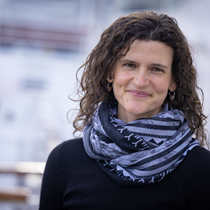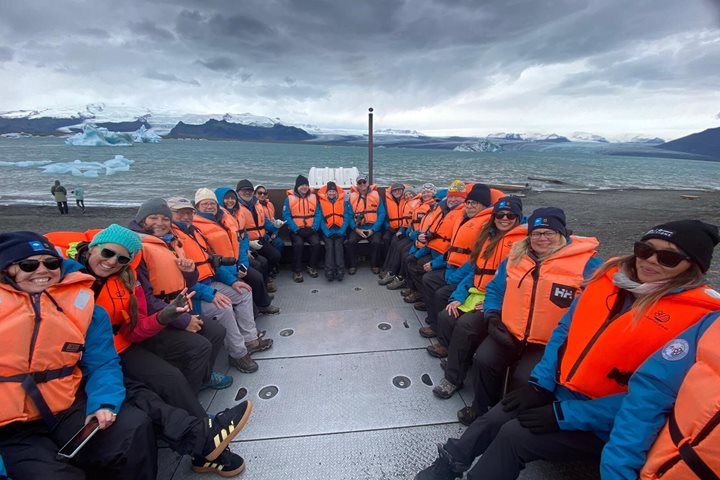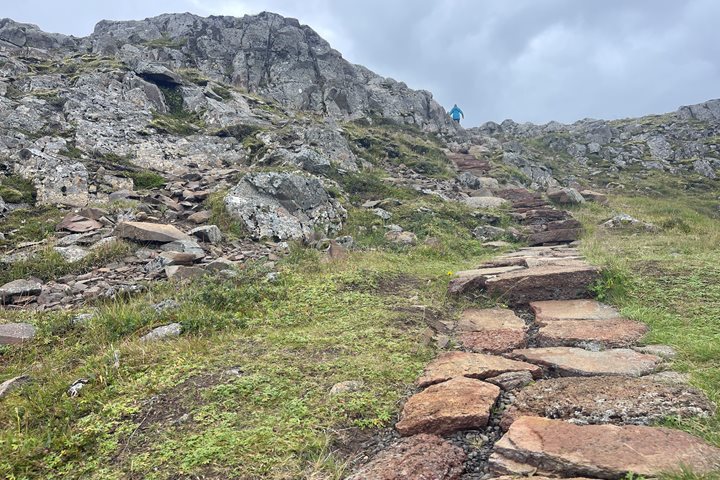It was hard to decide which was more fascinating–the killer whales or the gannets. Mid-morning, our Captain spotted a group of whales in the distance; he was tipped off by the birds diving all around them. It had been a few days since we’d seen some whales, so everyone was excited to head to the bow and watch the action as we approached. We discovered there were three groups of whales, including males, females, and calves, and they were darting around, clearly feeding on something. Every now and then, one would lob its tail, lunge, or jump right out of the water. Killer whales are always a fantastic sighting, but these ones were almost shown up by the action of the seabirds all around them. A mob of gannets filled the air with movement. Gannets are large seabirds with long necks, a yellowish head and slender, pointed wings. Their feathers are so smooth, they seem to be molded from plastic. One of their special skills is a dramatic dive that begins high in the air. They fly straight down and pull their wings back at the last minute, entering the water with minimal splash and a short plume of bubbles. They look like needles making stitches across the surface of the sea. Between the whales, birds, and fish, the photographers could hardly keep up.
After lunch we stopped at Heimaey, a volcanic island with a fascinating story written on the landscape. Late at night on January 23, 1973 an eruption began. Fire and lava spumed from craters that opened up all over the island. Luckily, the fisherman were all home that night due to bad weather, so the evacuation of the island only took five hours. Little did the townspeople know that the eruption would last five months and ten days. When you visit the island today, the story is everywhere. The harbor that had been 800 meters wide has been narrowed to 180. Lava buried 400 houses, yet nobody died.
Some of us hiked up the volcano to look out over the town and the gorgeous mountains that surround it. Most of the land below is lush and green, but some of it is still little more than a field of lava. At the top of the volcano little vents spilled hot air to remind us of the heat and pressure below. At the volcano museum, an audio guide and many creative exhibits tell the island’s story in great detail–from lost wedding gifts and melted chandeliers to the geological phenomena that underpin life here.
We’re off to Reykjavik now, where our journey comes full circle and we prepare for home.








